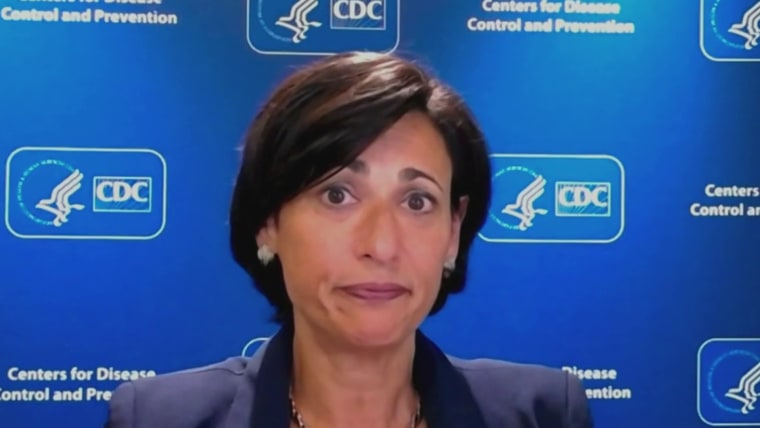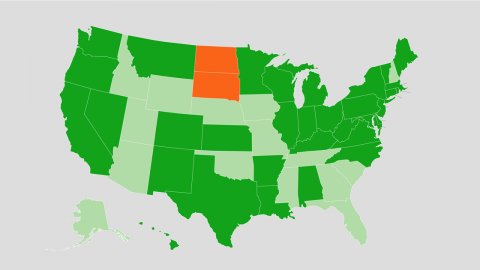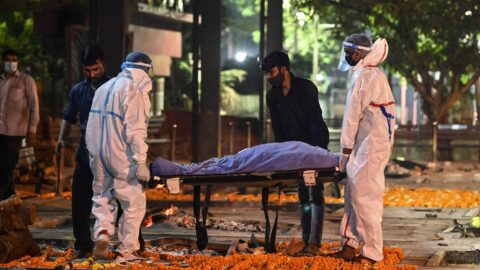The number of children hospitalized with Covid-19 is increasing as the delta variant continues to spread, the Centers for Disease Control and Prevention said Thursday, with the trend most apparent in places with low vaccination rates.
The increase in hospitalizations is not due to the delta variant’s making young people sicker compared to previous variants, said the CDC’s director, Dr. Rochelle Walensky.
Full coverage of the Covid-19 pandemic
Rather, there is simply much more transmission, meaning more children are exposed and therefore infected.
“More children have Covid-19 because there is more disease in the community,” Walensky said at a White House Covid briefing Thursday.
The overall number of children in the hospital with Covid remains low. The American Academy of Pediatrics reports that as of Aug. 26, children comprised just 2.3 percent of all Covid-related hospitalizations.
But the rise is of particular concern as schools are reopening — with a majority of young children and teens unvaccinated and, in many cases, unmasked.
According to CDC data, the rate of new Covid hospitalizations among children has soared past the winter peak. The hospitalization rate is up by more than 11 percent since the previous seven-day average.
The rises in pediatric Covid hospitalizations are most apparent in areas where vaccination is not widespread, Walensky said.
“Cases, emergency room visits and hospitalizations are much lower among children in communities with higher vaccination rates,” she said, referring to two studies the CDC is scheduled to publish Friday.
One of the studies, which looked at hospital data collected in July, found that the hospitalization rate among unvaccinated teens was nearly 10 times higher than for fully vaccinated teens.
Download the NBC News app for full coverage of the Covid-19 pandemic
Another set of data, collected last month, found that the rate of hospitalization for children was nearly four times higher in states with the lowest vaccination coverage, Walensky said.
States with the lowest vaccination rates include Alabama, Idaho, Mississippi, West Virginia and Wyoming. Less than 40 percent of the population has been vaccinated in those states.
The executive vice president of the Robert Wood Johnson Foundation, Dr. Julie Morita, a pediatrician, said it appears the data Walensky discussed “make it clear that high levels of vaccinations in the community can keep hospitalizations among young people down.”
In other words, surrounding unvaccinated children with those who have been vaccinated can help protect them.
Vaccinations for kids ages 12 and up have been available since the Food and Drug Administration authorized Pfizer-BioNTech’s vaccine for ages 12 to 15 in May.
Nationwide, 18.3 percent of children 17 and younger have had at least a first shot, according to data collected by the Mayo Clinic. Fourteen percent have been fully vaccinated.
Vaccines are not yet authorized for children 11 and younger and are not expected to be until the fall or winter. That means that, except for children enrolled in clinical trials, virtually 100 percent of kids 11 and younger remain unvaccinated.
Morita said that once the vaccines are authorized for children, it should not be difficult to vaccinate that population.
The U.S. has a strong pediatric immunization program, she said. Indeed, it is generally children who get vaccines, not adults. Within the first year of life, babies can get up to 16 shots. A Covid vaccine could be added as another routine shot.
Follow NBC HEALTH on Twitter & Facebook.









Recent Comments